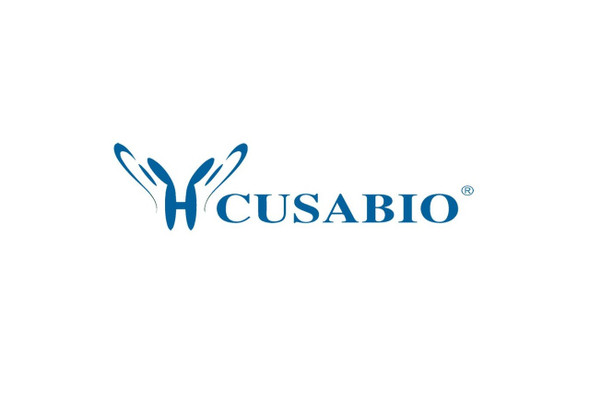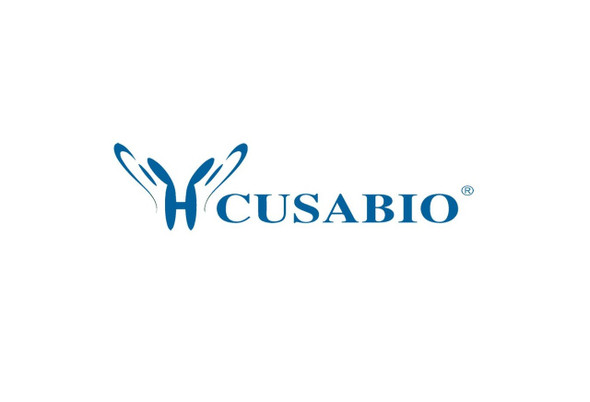Cusabio Virus & Bacteria Recombinants
Recombinant Human adenovirus C serotype 5 DNA-binding protein (DBP), partial | CSB-EP365892HIL
- SKU:
- CSB-EP365892HIL
- Availability:
- 13 - 23 Working Days
Description
Recombinant Human adenovirus C serotype 5 DNA-binding protein (DBP), partial | CSB-EP365892HIL | Cusabio
Alternative Name(s): Early 2A protein (Early E2A DNA-binding protein) (DBP)
Gene Names: DBP
Research Areas: Cancer
Organism: Human adenovirus C serotype 5 (HAdV-5) (Human adenovirus 5)
AA Sequence: SVPIVSAWEKGMEAARALMDKYHVDNDLKANFKLLPDQVEALAAVCKTWLNEEHRGLQLTFTSKKTFVTMMGRFLQAYLQSFAEVTYKHHEPTGCALWLHRCAEIEGELKCLHGSIMINKEHVIEMDVTSENGQRALKEQSSKAKIVKNRWGRNVVQISNTDARCCVHDAACPANQFSGKSCGMFFSEGAKAQVAFKQIKAFMQALYPNAQTGHGHLLMPLRCECNSKPGHAPFLGRQLPKLTPFALSNAEDLDADLISDKSVLASVHHPALIVFQCCNPVYRNSRAQGGGPNCDFKISAPDLLNALVMVRSLWSENFTELPRMVVPEFKWSTKHQYRNVSLPVAHSDARQNPFDF
Source: E.coli
Tag Info: N-terminal 6xHis-tagged
Expression Region: 174-529aa
Sequence Info: Partial
MW: 43.9 kDa
Purity: Greater than 90% as determined by SDS-PAGE.
Relevance: Plays a role in the elongation phase of viral strand displacement replication by unwinding the template in an ATP-independent fashion, employing its capacity to form multimers. Also enhances the rate of initiation. Released from template upon second strand synthesis. Assembles in complex with viral pTP, viral pol, host NFIA and host POU2F1/OCT1 on viral origin of replication. Covers the whole ssDNA genome during synthesis. The complementary strand synthesis induces its relese from DNA template. May inhibit cellular transcription mediated by the interaction between host SRCAP and CBP.
Reference: "Mislocalization of the MRN complex prevents ATR signaling during adenovirus infection." Carson C.T., Orazio N.I., Lee D.V., Suh J., Bekker-Jensen S., Araujo F.D., Lakdawala S.S., Lilley C.E., Bartek J., Lukas J., Weitzman M.D. EMBO J. 28:652-662(2009)
Storage: The shelf life is related to many factors, storage state, buffer ingredients, storage temperature and the stability of the protein itself. Generally, the shelf life of liquid form is 6 months at -20?/-80?. The shelf life of lyophilized form is 12 months at -20?/-80?.
Notes: Repeated freezing and thawing is not recommended. Store working aliquots at 4? for up to one week.
Function: Plays a role in the elongation phase of viral strand displacement replication by unwinding the template in an ATP-independent fashion, employing its capacity to form multimers. Also enhances the rate of initiation. Released from template upon second strand synthesis. Assembles in complex with viral pTP, viral pol, host NFIA and host POU2F1/OCT1 on viral origin of replication. Covers the whole ssDNA genome during synthesis. The complementary strand synthesis induces its relese from DNA template. May inhibit cellular transcription mediated by the interaction between host SRCAP and CBP.
Involvement in disease:
Subcellular Location: Host nucleus
Protein Families: Adenoviridae E2A DNA-binding protein family
Tissue Specificity:
Paythway:
Form: Liquid or Lyophilized powder
Buffer: If the delivery form is liquid, the default storage buffer is Tris/PBS-based buffer, 5%-50% glycerol. If the delivery form is lyophilized powder, the buffer before lyophilization is Tris/PBS-based buffer, 6% Trehalose, pH 8.0.
Reconstitution: We recommend that this vial be briefly centrifuged prior to opening to bring the contents to the bottom. Please reconstitute protein in deionized sterile water to a concentration of 0.1-1.0 mg/mL.We recommend to add 5-50% of glycerol (final concentration) and aliquot for long-term storage at -20?/-80?. Our default final concentration of glycerol is 50%. Customers could use it as reference.
Uniprot ID: P03265
HGNC Database Link: N/A
UniGene Database Link: N/A
KEGG Database Link: N/A
STRING Database Link: N/A
OMIM Database Link: N/A






